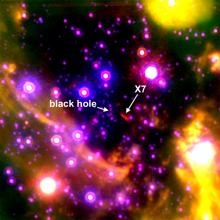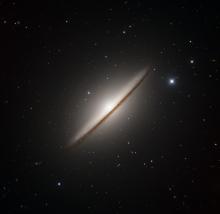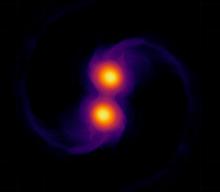Listen to today's episode of StarDate on the web the same day it airs in high-quality streaming audio without any extra ads or announcements. Choose a $8 one-month pass, or listen every day for a year for just $30.
You are here
The Final Parsec
The core of a galaxy in Perseus is all churned up. Two supermassive black holes inhabit the galaxy’s heart. Combined, they’re 15 billion times the mass of the Sun. But they’re only 24 light-years apart — far closer than any other pair of giant black holes yet seen.
The black holes neared each other as two galaxies merged. The gravity of the black holes should kick stars out of the galaxy, causing the black holes to spiral closer together.
As they get especially close, though, they might hold their positions — never merging to form a single black hole. That’s known as the “final-parsec” problem. Models suggest that when two supermassive black holes close to within about a parsec of each other — about three light-years — they stop getting closer. They’ve kicked out all of the stars around them, so there’s nothing left to exchange energy with — nothing to push the black holes closer together.
The problem is that black holes at the hearts of merging galaxies sometimes do come together.
That could require a third black hole. In one scenario, one black hole might be kicked out of the system, pushing the other two closer together. But only two black holes have been seen in the galaxy in Perseus. So right now, there’s no way to know if the black holes might someday merge.
Perseus is low in the northeast at first light. The galaxy is quite faint. But you can see its position, roughly half way between the stars Epsilon and Xi Persei.
Script by Damond Benningfield





